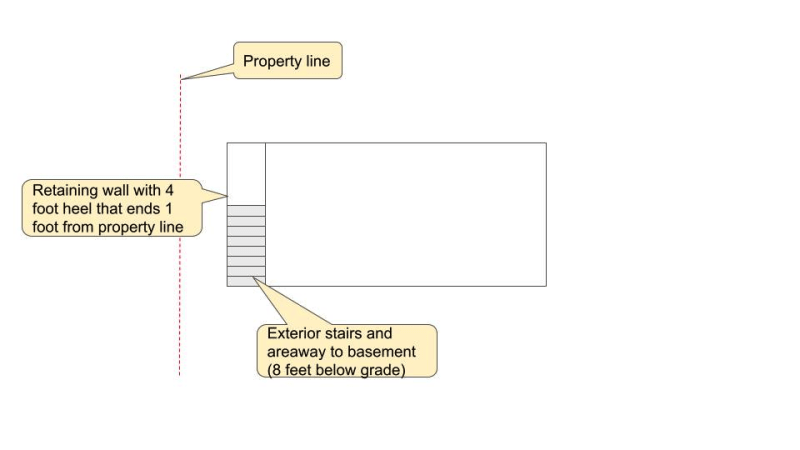I am designing a basement with an entrance via exterior stairs that go down 8 feet. The bottom of the basement is within seasonal high groundwater mark, so would expect hydrostatic pressure. The side with the stairs is close to the property line, and a cantilevered retaining wall with a 4 foot heel would bring the edge of the heel within 1 foot of the property line.
Any suggestions on design alternatives that would reduce the length of the heel to minimize how far toward the property line we need to excavate? What is the absolute minimum heel length that would be needed?
Some context: No constraints on toe length; the stairs to the basement will be concrete; the landing area at the bottom of the stairs does not necessarily have to be open from above in case installing top support there might help.

Any suggestions on design alternatives that would reduce the length of the heel to minimize how far toward the property line we need to excavate? What is the absolute minimum heel length that would be needed?
Some context: No constraints on toe length; the stairs to the basement will be concrete; the landing area at the bottom of the stairs does not necessarily have to be open from above in case installing top support there might help.

